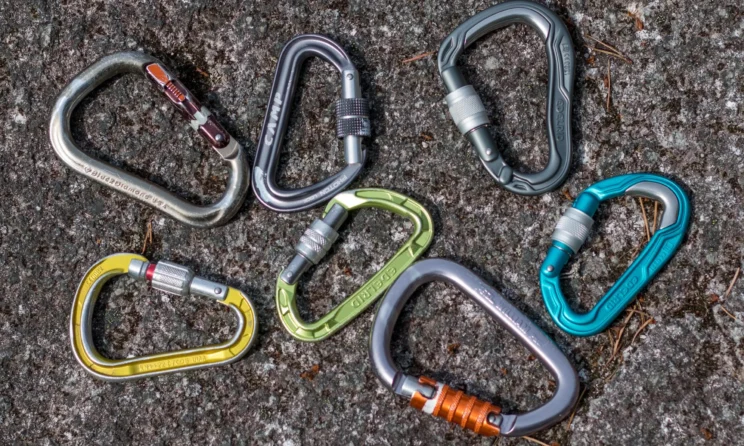
When it comes to outdoor activities like mountaineering or rock climbing, safety is paramount. One of the most essential tools for ensuring security is the carabiner—a small but mighty piece of equipment that plays a crucial role in keeping adventurers safe. These versatile connectors are designed to support weight, manage ropes, and provide reliable attachment points, making them indispensable for anyone engaging in high-risk activities.
What Are Carabiners?
Carabiners are sturdy metal loops with spring-loaded gates, designed to connect ropes, harnesses, and other equipment securely. Made from materials like aluminium or steel, they are lightweight yet strong enough to handle significant loads. Their versatility makes them useful not only in climbing but also in activities such as caving, rappelling, and even industrial work where safety is a priority.
Key Features of Carabiners That Ensure Safety
Carabiners are designed with specialized features that prioritize safety, making them essential for secure and reliable performance in outdoor activities.
Strength and Durability
Carabiners are engineered to withstand immense forces, making them reliable tools in critical situations. Steel carabiners, for instance, are known for their high load capacity, while aluminium carabiners provide a lighter alternative for recreational activities. Their ability to handle extreme conditions ensures they remain secure during intense climbs or descents.
Locking Mechanisms
Many carabiners feature locking gates, which add an extra layer of security. Locking carabiners come in different types, such as screw-lock, twist-lock, or auto-lock mechanisms, preventing accidental opening and ensuring your connection remains intact. This is especially important in situations where movement or vibrations could compromise safety.
Versatile Shapes
Carabiners come in various shapes, each designed for specific purposes. The D-shape is ideal for heavy loads, while the pear-shaped HMS carabiner is commonly used for belaying. Oval carabiners are perfect for evenly distributing loads, providing flexibility across multiple activities.
How Carabiners Enhance Safety in Climbing
In climbing, carabiners are the critical link between the climber and their safety system. They secure the rope to the harness, connect to anchors, and enable smooth transitions between belaying and climbing. By acting as a reliable connection point, carabiners reduce the risk of falls and ensure the climber remains securely tethered to their system.
The use of locking carabiners adds an additional safeguard, preventing accidental disconnections during critical moments. Their strength and reliability make them a trusted tool for climbers navigating both indoor walls and rugged outdoor terrains.
Carabiners Beyond Climbing
While carabiners are indispensable in climbing, their utility extends to other outdoor activities. In caving and canyoneering, they connect harnesses, anchors, and ropes, enabling safe navigation through challenging environments. Hikers and campers use carabiners to secure gear, while rescue teams rely on them for creating stable systems in emergency scenarios.
Choosing the Right Carabiner
Selecting a suitable carabiner depends on the activity and its specific requirements. Consider factors such as material, weight, shape, and locking mechanism. For climbing, opt for high-strength carabiners with reliable locking gates. For general outdoor use, lightweight aluminium carabiners may be sufficient.
Conclusion
Carabiners are more than just metal loops—they are lifelines in climbing and outdoor activities. Their strength, versatility, and advanced locking mechanisms provide critical safety and reliability. Whether scaling a rock face, exploring a cave, or securing camping gear, the suitable carabiner ensures that every adventure is thrilling and safe. By understanding their features and choosing the right type for your needs, you can trust these small but powerful tools to keep you secure in any outdoor pursuit.





